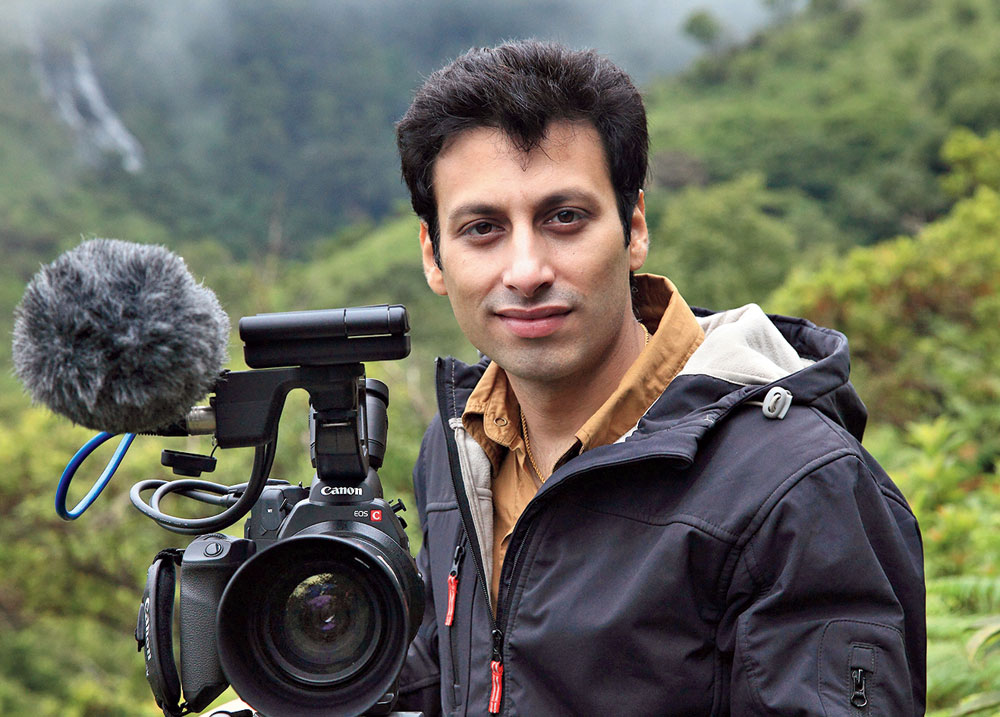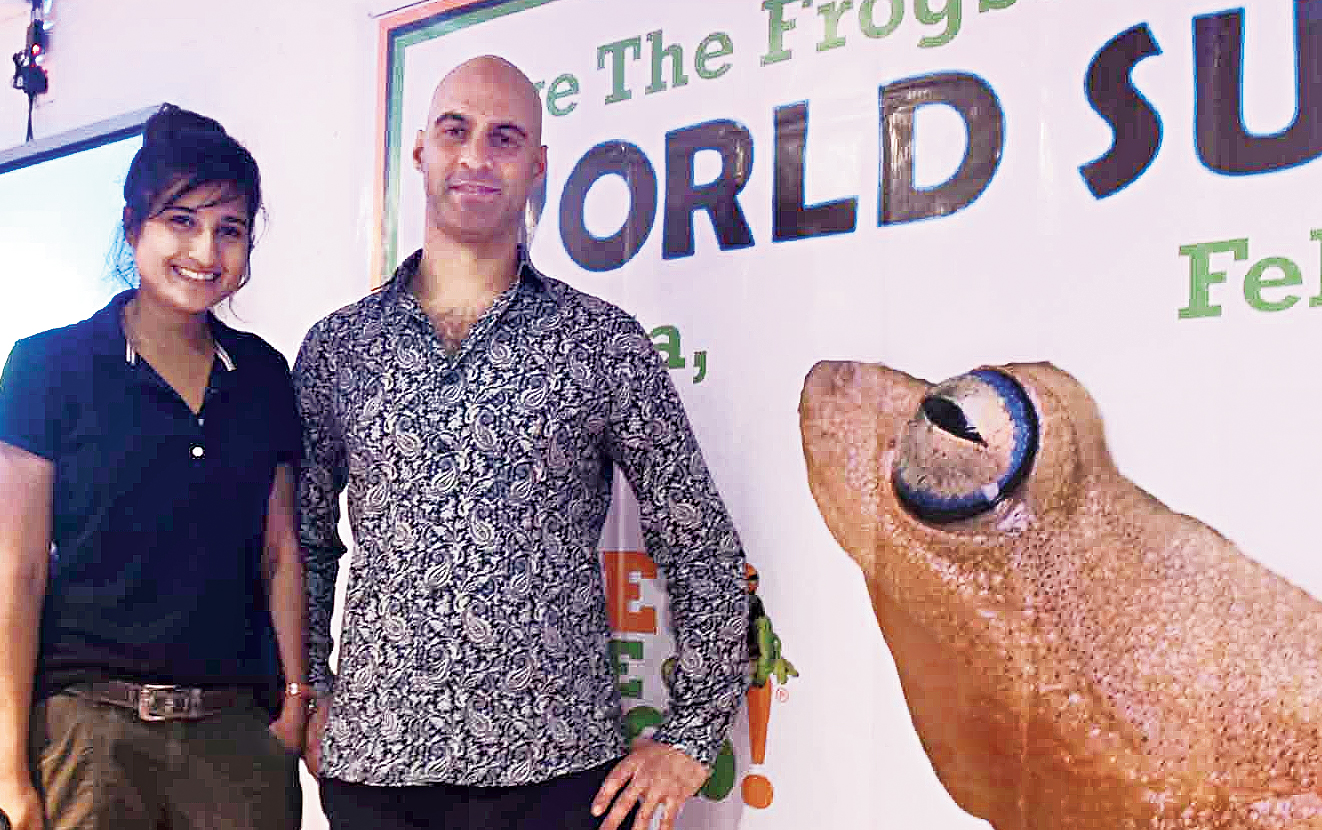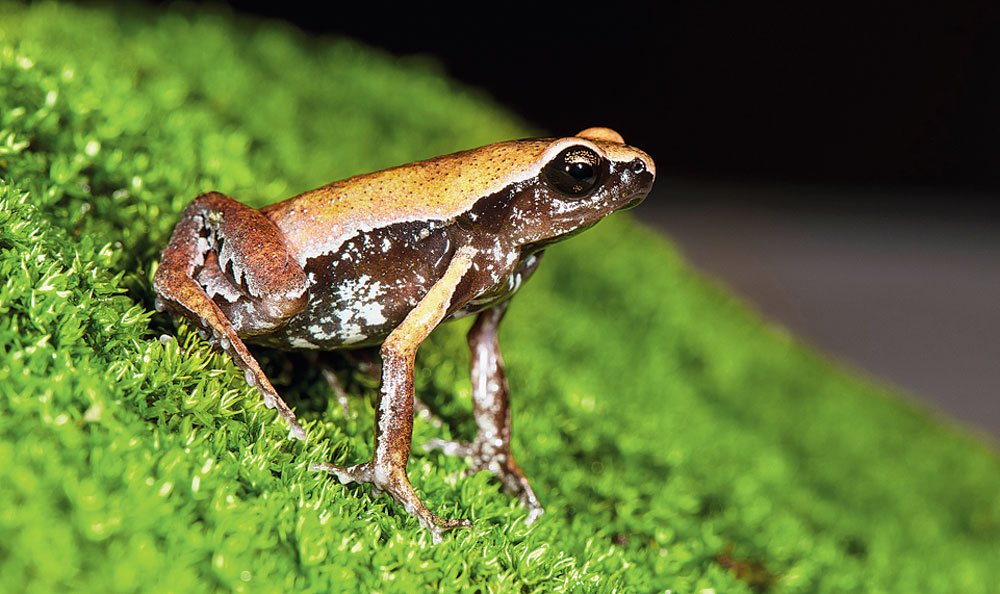He has spent hours in rain and slush watching frogs do a headstand or sway legs like graceful dancers. Ajay Bedi belongs to the third generation of a family fascinated with animal lives. Along with twin brother Vijay, he has won the Wildscreen Awards, known as the Green Oscars, for his films on langur and red panda. With his recent film The Secret Lives of Frogs, a silver winner at the Cannes Corporate Media & TV Awards in 2018, set to beam on Animal Planet, he speaks of the creatures that the brothers have filmed over the years.
What made you choose these frogs to film when some of them emerge just once a year from underground?
That was the challenge. They have not been filmed extensively. It took us almost three years. Purple frogs have recently been rediscovered. They are burrowing frogs and we followed them for almost 40 days once they emerged. We got great behaviour of purple frogs like feeding on termites and laying eggs. Both are first photography records.
How small are they?
They are funny-looking. They have nose that look like pig’s nostrils. They have a huge body with small legs and look like small water balloons. Males are smaller than females. During courtship, the male rides on the female’s back as she travels across terrain — water, stones, leaves — to look for the ideal spot to lay eggs. At times, she falls yet the male holds on to her! The film covers its entire breeding cycle — from tadpole stage to courtship. This is one of the first films in India on amphibians.
Talk of the variety of frogs you have filmed and their habits.
Other than the endangered Purple Frog, we shot the critically endangered Bombay Night Frog, the Kumbara Night Frog and the Shrub Frog, and the vulnerable Torrent Frog. The last is just 30mm in size and is called the Dancing Frog. To impress the female, they move their hind legs one after the other, as if they are dancing.
After mating, the female Bombay Night Frog does a headstand and lays eggs on leaves overhanging a waterbody. The idea is to put the eggs not on the ground but on leaves so once they hatch, the tadpoles can fall into the stream and swim. The Kumbara Night Frog dips its hands in the mud and, like potters making pots, it lubricates its eggs. The aim is to protect them from predation and also keep them moist till they hatch. They do it frequently as they guard their eggs. That’s why they are called Potter Frogs. Once the rains come, that softens the shell and the eggs can hatch.
What was the biggest difficulty while shooting?
When you shoot bigger animals you can shoot standing. But for frogs, we had to lie on the ground to film them at eye level. The biggest challenges were the rain and the water. We were drenched to the bones. Our gumboots were full of water. Filming the Purple Frog was the toughest because the time we had in hand to film them was little. We could hear them croak underground but could do nothing till they actually came out.
Did you clear the grass to get a clear view on the ground?
We try not to interfere in the habitat as that scares the animals. We were using macro lenses and could go close to them. We had to be stationed in the water for hours immobile for the stream frogs to get used to us. We took long shots of the tree frogs.
Your father Naresh Bedi was the first Indian to win the Wildscreen Panda Award in 1984. How were the growing up years?
My father and uncle grew up in a university campus which was inside a forest near Hardwar. Our grandfather kept animals at home — pythons, king cobras and lion cubs — because he needed them for research. Then the family moved to Delhi. At school after the summer vacation, all the children were asked where they had gone on vacation. Our answer was always the same — jungle. We were called the Mowglis.
You emulated your father by winning the Wildscreen Awards for The Policing Langur.
That was one of our first directorial projects, for Vijay and me. Rhesus monkeys in Delhi are a big problem. A man with a langur on a leash would shout and run at groups of smaller monkeys to drive them away. The whole idea of having an animal to scare other animals was quite unique so we wanted to film it. But scaring them meant they were moving from one building with a langur to another without one. They were known to charge at people. Scared people have fallen from terraces and died. Children got injured. Once I was attacked and broke my camera. The debate was whether to translocate them or quarantine the males to control the population rather than scaring them.
You got an Emmy nomination for Cherub of the Mist.
Yes. That won 18 awards. We saw the red panda first at the Darjeeling zoo. Our challenge was to pick up an animal and contribute to its conservation. At that time, there were not much record of red pandas. People refused to fund us saying other films units had failed to find them and so would we. Many did not know that there were pandas in India!
What message do you want to share based on your experience of making the film?
Government policies are skewed towards bigger species. It is time to focus on the smaller ones. Two hundred species have disappeared since 1980. Frogs are facing infection, habitat loss, pollution and even being harvested as food in some countries. As indicator species, frogs are the first to be affected if things go wrong. We spotted so many deformities — frogs with extra or missing limbs!













